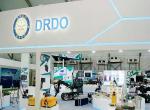The ambient air quality has been monitored in Delhi since 1984 by the Central Pollution Control Board formerly known Delhi Pollution Control Committee. The collected data and analysis shows there is deterioration in air quality of Delhi. The air pollution has been a matter of concern because it is impacting environment and health. To combat the air quality problem it is important to understand the reason of problem to implement successful robust action plan in time frame. Engaging different stakeholders and increasing awareness is very important to get the best results to implement action plan. Central Pollution Control Board along with State Pollution Control Boards has been conducting National Air Monitoring Program covering 240 cities of the country to understand the status of air quality and working on new policies and recommendations for improving the air quality.
Conventionally the air quality status has been reported through voluminous data which is bit complex to understand and one should need knowledge of basic science to correlate different pollutant impact on air quality and health. In recent past concern rose about the air quality so Government has taken initiative to provide information on air quality and put up in public domain in simple numbers that is easily understood by a common person. The Air Quality Index (AQI) is one such tool for effective dissemination of air quality information to people. AQI is a scale designed to help public understand what the air quality around them means to their health. AQI act as ‘One Number-One Color-One Description’ to judge the Air Quality for common masses. The AQI has six categories of air quality rating as Good, Satisfactory, Moderately, Poor, Very Poor and Severe polluted air with different color code. Each of this class is associated with expected health impacts. AQI considers eight pollutants viz., PM10, PM 2.5, SO2, NO2, CO, O3, NH3 and Pb.
Several studies were conducted and it was found that air pollution in Delhi caused because of vehicular exhaust emission and re-suspension of roadside dust. The introduction of compressed natural gas (CNG) vehicles in Delhi began gradually from the year 1999. By 2003, plying of diesel, petrol for public transport has stopped completely. The change in ambient air quality was pre and post CNG implementation is attributed to implementation of CNG in Delhi. A decreasing trend had been observed in SO2 levels in ambient air during 1995-2010 because of various interventions that have taken place in previous years such as reduction of Sulphur in diesel and use of cleaner fuel such as CNG. Various measures such as implementation of Bharat Stage-II/III/IV norms have been taken to mitigation ambient NO2 and PM10 levels but increasing number of vehicles which contributed NO and PM10 levels exceeds the prescribed norms in Delhi.
At present, air quality monitoring in Delhi is being monitored by three different agencies to meet specific requirements of their operations. To provide uniform information it was decided by Government that all the monitoring systems will follow a uniform scientific calibration protocol and confirmation process. Data for advised monitored parameters from all the monitoring stations sent to Central Pollution Control Board for their analysis and authenticated air quality information communicated on daily basis to public at large. The annual average concentration of PM10 in ambient air in Delhi is much above the prescribed limits during last three years due to uncontrolled construction activities and vehicular pollution. The other reason of high levels of PM10 in Delhi is due to geo-climatic conditions and its juxtaposition to Thar Desert. Burning of agriculture waste and polluted uncontrolled industries around National Capital Region are also contributing air pollution in Delhi. There is need to get help from Uttar Pradesh and Haryana Government to improve air quality by controlling the agriculture waste burning and implementation of Air and Water Act through respective Regional Pollution Control Board. Delhi Government has taken action to stop burning of dry leaves and waste and promoting composting of green waste to reduce particulate pollution.
The annual average levels of Lead (0.50 µg/m3) and Sulphur Dioxide (50 µg/m3) are well within the limits and levels of NO2 (40 µg/m3) are slightly exceeding the standards. There is change trend for Lead, Sulphur Dioxide and PM10. Nitrogen Dioxide is an emerging air pollutant in Delhi. The level of PM 2.5particle remained three-four times higher than the safety standard. The records showed that three winter months (November, December and January) recorded as “severely polluted” for over 65% of the days in Delhi. Last year National Green Tribunal banned on vehicles more than 15 years old from plying in Delhi which significantly contribute in deteriorating air quality.
To improve air quality includes, tightening of industrial emission norms, hazardous and biomedical wastes, management of municipal, source distribution studies for particulate matter in ambient air, strengthening public transport, preparation and implementation of action plans for critically polluted areas and public awareness. The other steps are also urgent, from monitoring air quality to smog alerts to take precautions because of poor air quality. But most critical is the need to massively augment our public transportation systems, from vehicles to footpaths and cycle tracks, so that we can reduce our carbon foot print.
The Government has taken various measures to contain air pollution in Delhi, which include supply of cleaner fuels as per Auto Fuel Policy, use of gaseous fuel for public transport, pollution under control certificate system for in use vehicles, rigorous source specific standards emission and their obedience, use of beneficiated coal in thermal power plants, closure of coal based Indraprastha Thermal Power Plant, use of beneficiated coal at Badarpur and Rajghat thermal power plants, expansion of metro train system, strengthening public transport, revised emission norms for gensets etc. The initiatives undertaken by the Ministry of Environment, Forest and Climate Change aimed to balance environment, conservation and development.
Establishing green cover is also very important to improve the air quality of Delhi. Green belts provide dust mitigation by reducing air velocity resulting of heavy dust particles and fine particulates are adsorbed to vegetation surfaces. Green belt traps some of the dust by adsorption and greater settling following reduced air velocity. We need to keep ourselves vigilant and motivated to improve the air quality in Delhi by adopting public transport and committed to reduce our carbon foot print.
Dr Hishmi Jamil Husain is a well-known international expert in the field of Environment Management and Sustainable Development.
Published Date: 26th August 2015, Image Source: http://www.topnews.in
(Disclaimer: The views and opinions expressed in this article are those of the author and do not necessarily reflect the official policy or position of the Vivekananda International Foundation)







Post new comment